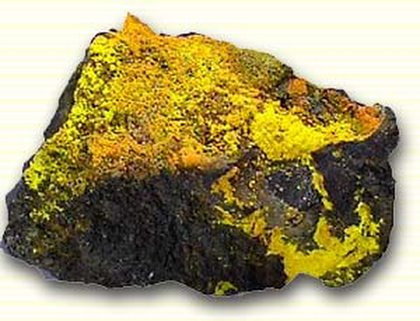Published on Friday January 21 2011

Uranium developer Deep Yellow promises that the next 12 months will likely prove beneficial to the company, with the prefeasibility study on its Omahola project, in Namibia, due to be completed this year, and a likely initial resources estimate and scoping study results of a magnetite iron project on the same tenement.
MD Patrick Mutz tells Mining Weekly that the prefeasibility study on the Omahola uranium project, which was initially scheduled for release during December 2010, will be delayed owing to the discovery of a new uranium deposit, dubbed Ongolo Alaskite.
The Ongolo Alaskite deposit will add a third source of ore for the planned Omahola project processing plant, with the Inca and Tubas Red Sands (TRS) deposits providing the balance.
“This is mixed news; the good news is that we have another source of ore to add to our total resources, and that is always positive. “The bad news is that it will cause a delay in the completion of the prefeasibility study because we believe the new mineralisation at Ongolo has the potential to positively affect the prefeasibility study, but we need to demonstrate this with metallurgical testwork,” says Mutz.
He adds that preliminary tests on the new deposit suggest that it contains similar mineralisation to that found in the Inca deposit. However, Inca also contained magnetite, which can potentially be separated from the uranium ore during the processing for sale as a by-product.
An initial resource for the Ongolo Alaskite deposit is expected by the end of March this year and, if proven viable, the deposit will be folded into the Omahola project.
“Preliminary tests certainly suggest that [Ongolo] will fit nicely into the Omahola project, because it hosts very similar mineralisation to the Inca deposit.”
Once the viability of the Ongolo Alaskite deposit has been established, and the Omahola prefeasibility study has been completed, a definitive feasibility study on the project will be undertaken immediately, and will be completed within nine to ten months, says Mutz.
The Omahola plant, which is expected to start production in 2014, will initially produce at a rate of around 1 000 t, or around 2,2-million pounds of uranium a year.
The Inca deposit is estimated to host a mineral resource of 15-million Joint Ore Reserve Committee- (Jorc-) compliant tons, at 405 parts per million (ppm) uranium oxide (U3O8), for 13,4-million pounds contained U3O8.
TRS hosts an inferred resource of 10,7-million Jorc-compliant tons, grading at 158 ppm U3O8, and a measured and indicated resource of 3,2-million tons, grading 168 ppm.
Meanwhile, Mutz says that Deep Yellow has re-evaluated 2008 drilling which identified a 300-m intercept of magnetite iron near the Inca deposit.
Follow-up drilling, in 2010, has clearly identified a magnetite deposit, dubbed the Shiyela iron project, around 15 km south-west of the Inca deposit and closer to the export hub of Walvis Bay. Mutz says that the project is “taking on a life of its own”.
“It is at a point where we expect to have an initial resource on the iron magnetite in that area by the end of March. “We have done the initial testing, which has shown that the material can make a very high-quality magnetite concentrate suitable for export.”
While an initial resource is planned for the first half of 2011, Mutz notes that Deep Yellow will also be undertaking a scoping study on Shiyela during the year.
“We are not looking to shift our focus away from uranium to iron, but we can’t turn our backs on a nonuranium project that has the potential to significantly add value to the company’s bottom line. “So, if it develops into a stand- alone iron project, we will have to decide how best to deal with it so we can keep our focus on our uranium assets – this could mean a joint venture or spinning it off.” Deep Yellow will be attending the Mining Indaba 2011.






 Australian Uranium News - Research
Australian Uranium News - Research






